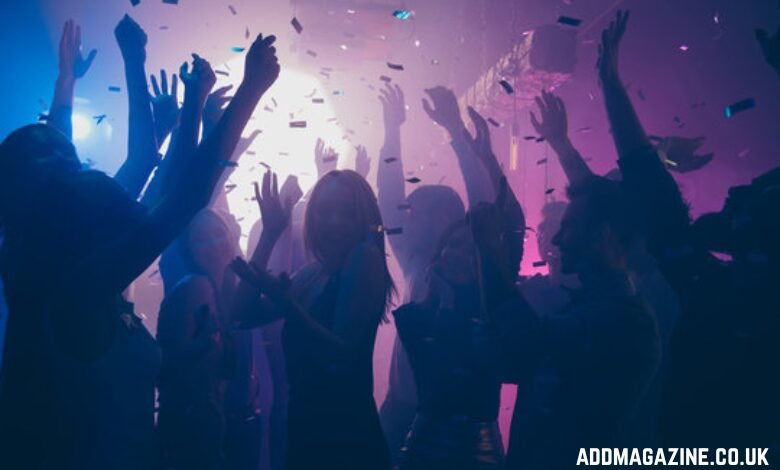In the world of social media, influencers hold significant power. They shape trends, drive consumer behavior, and influence the opinions and habits of millions of followers. But when the line between entertaining content and irresponsible behavior gets blurred, we see what many call “influencers gone wild.” This phenomenon involves influencers who engage in actions or stunts that shock, outrage, or amuse their audiences—sometimes crossing ethical boundaries in the process. While some of these behaviors might be deliberate attempts to stay relevant, others may reflect poor judgment or an unconsidered desire for fame.
The Rise of the Influencer Culture
The influencer culture is built on social media platforms like Instagram, TikTok, and YouTube, where people with large followings are able to promote products, ideas, and lifestyles. These influencers have turned their personal brands into profitable enterprises, collaborating with companies for sponsored posts, product launches, and even acting as ambassadors for different causes. As the number of followers increases, so does their potential for financial gain, which in turn, raises the stakes for these influencers to remain relevant.
In many ways, the rise of influencers has democratized fame. The barriers that once existed between the celebrity world and the average person have faded, allowing ordinary individuals to build extraordinary followings. The more authentic an influencer is perceived to be, the stronger their connection with their audience. But with this power also comes the temptation to go to extreme lengths to capture and maintain attention.
When Attention Turns Into Controversy
In an era where social media trends change in the blink of an eye, the pressure to stay relevant is high. For some influencers, this pressure leads to reckless actions. “Gone wild” moments are often calculated risks designed to trigger emotional responses, from anger to amusement, that will generate buzz. The goal is often simple: gain viral status. However, the consequences of these actions can be significant—both for the influencers and their audiences.
Influencers gone wild can take many forms. It might involve outrageous stunts, public displays of bad behavior, or using controversial opinions to stir up outrage. While some might see these actions as harmless fun or a creative expression of individuality, they often push ethical and moral boundaries. Here are some examples of what might be considered “gone wild” behavior:
Dangerous Stunts
Influencers sometimes participate in physically dangerous challenges in an effort to gain attention. These stunts might involve risky activities like cliff diving, skateboarding in unsafe conditions, or engaging in extreme eating challenges. While these activities can be entertaining to watch, they often encourage followers—particularly younger, impressionable ones—to imitate the behavior without considering the risks involved.
Toxic Behavior and Public Feuds
The pursuit of attention can also lead to public disputes between influencers, which are often played out on social media for all to see. These feuds might involve back-and-forth insults, online shaming, or calling out other influencers or public figures for perceived wrongs. Sometimes these fights are staged for publicity, but they can also create a toxic environment that damages the reputation of everyone involved.
Excessive Display of Privilege
In some cases, influencers gone wild engage in behaviors that highlight their wealth or status, often in ways that come across as tone-deaf or insensitive. Posting about expensive vacations, designer goods, or excessive spending in times of social or economic hardship can lead to backlash from followers who may perceive the influencer as out of touch.
Unethical Promotion of Products
Some influencers have faced criticism for promoting products they have no real connection to or belief in, simply for the financial benefit. This kind of “sellout” behavior can be seen as manipulative, especially when influencers promote items that may not align with their values or the needs of their audience. In extreme cases, influencers may promote products that are unsafe or harmful, like unregulated supplements, extreme dieting plans, or unverified beauty treatments.
The Impact on Followers and Society
The influence of these influencers can have both positive and negative consequences on society, particularly for their followers. When influencers engage in controversial behavior, it can create a ripple effect, especially when those actions influence the younger or more impressionable demographic that makes up a significant portion of social media audiences.
- Normalizing Dangerous or Irresponsible Behavior: When influencers partake in reckless activities, it can set a dangerous precedent for their followers. Young people, in particular, may look up to influencers as role models and feel compelled to emulate their actions, without fully understanding the risks involved. This could lead to real-world consequences, like physical injuries or adopting unhealthy habits.
- Fostering Unrealistic Expectations: Influencers who excessively flaunt their wealth, beauty, or seemingly perfect lives often create unrealistic standards for their audience. This can lead to dissatisfaction with one’s own life, body image issues, or a false sense of what success looks like. The pressure to “keep up” can result in negative mental health outcomes for followers who believe they need to replicate these lifestyles to be happy or successful.
- Exploiting Vulnerable Audiences: Many influencers are well aware of their power and influence, which is why some exploit their platforms to sell products, promote certain lifestyles, or endorse harmful ideologies. Vulnerable groups, including teenagers and those struggling with self-esteem, can be particularly susceptible to this kind of manipulation. The emotional pull of influencer culture can cloud judgment, leading people to make choices that are not in their best interest.
Why Do Influencers Go Wild?
At the heart of the “gone wild” phenomenon is a combination of fame, money, and the desire for attention. Social media platforms reward engagement—likes, shares, comments, and views. Influencers often find themselves chasing that next viral hit, feeling pressured to keep up with the pace of content creation while remaining relevant to their audience. With algorithms prioritizing content that garners attention, influencers are encouraged to be more provocative, outrageous, and bold in their behavior.
The temptation to take things to the extreme comes from the pursuit of a more significant online presence. In some cases, influencers feel that their popularity is on the line. For others, it’s about standing out in a saturated market of digital creators. The influencers who “go wild” are often those who have found the formula for virality—stirring up emotions in their audience and creating content that people want to talk about.
The Fine Line Between Entertainment and Exploitation
While influencers gone wild can sometimes be seen as entertaining or funny, there’s a fine line between pushing boundaries for fun and exploiting sensitive topics or irresponsible behavior for profit. In some cases, influencers may engage in controversial actions without fully understanding the consequences or long-term effects on their careers. Others might be more strategic, understanding the mechanics of social media and deliberately playing to their audience’s emotions.
The ability to make money from a social media following is a powerful incentive, but it also comes with the responsibility to recognize the influence one has. In extreme cases, influencers have faced backlash, lost sponsorships, or even been banned from platforms due to their reckless behavior. For influencers who cross the line, the consequences can be severe. But for some, the risk may be worth it—if the payoff is increased visibility, brand deals, and a larger following.
The Future of Influencers Gone Wild
As social media continues to evolve, the behaviors of influencers are likely to evolve with it. However, it’s important for both influencers and their followers to consider the impact of the content they engage with. Influencers need to recognize the power they hold and use it responsibly, promoting content that encourages positive behaviors rather than exploiting negative ones.
For the audience, the responsibility lies in critical thinking. Followers should be cautious about blindly following trends or mimicking behaviors that might not be healthy or appropriate. It’s also essential for platforms to continue regulating content to ensure that influencers are held accountable for the message they promote.
Conclusion
The term “influencers gone wild” highlights the extreme behaviors some influencers engage in to gain attention and stay relevant in a digital age where viral content is king. While this can lead to moments of shock value or entertainment, it also raises important questions about the ethical implications of such actions. As the influencer culture continues to grow, it’s crucial to strike a balance between creativity and responsibility, ensuring that the content produced is not only engaging but also beneficial to society at large. Influencers should remember that their actions can have real-world consequences, and with great influence comes great responsibility.




